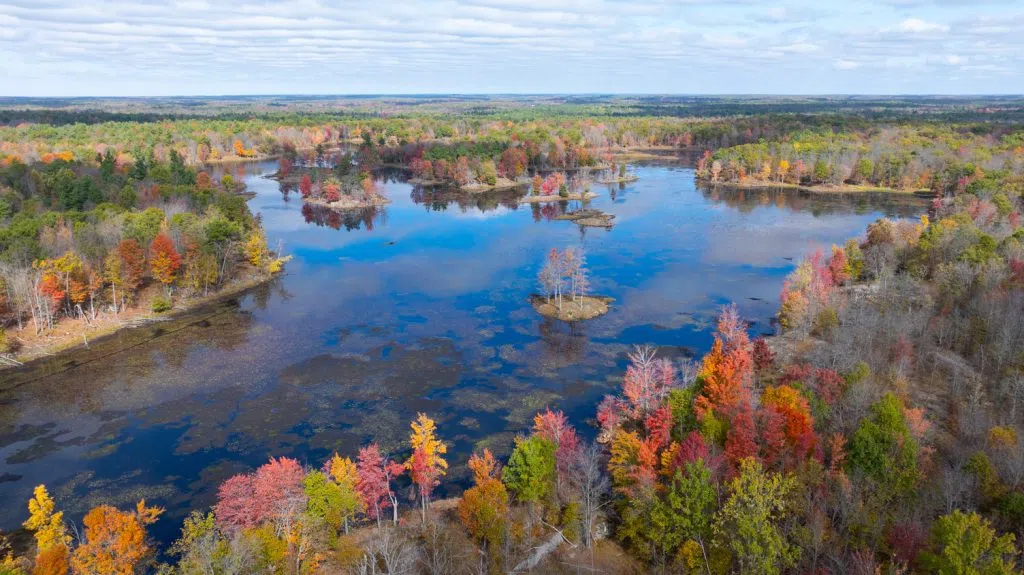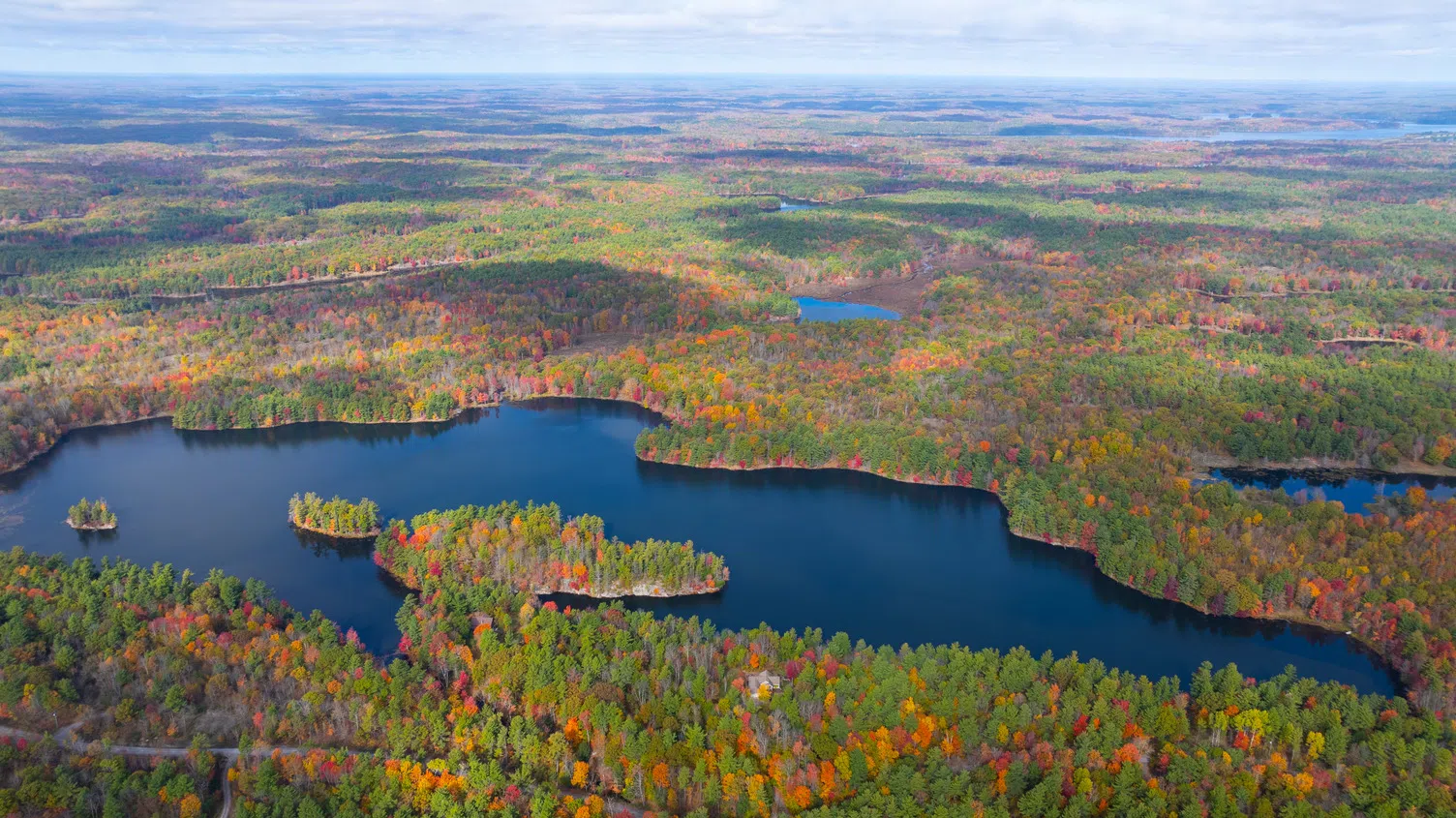The Frontenac Arch is expanding thanks to the Nature Conservancy of Canada’s (NCC) acquisition of almost 350 hectares of critical forests, wetlands and freshwater shoreline.
The Frontenac Arch connects Ontario’s Algonquin Highlands with the Adirondack Mountains in New York State, forming a vital ecological corridor for hundreds of migratory and wide-ranging species through a network of connected conservation lands.
The three new projects include areas near Christie Lake, Upper Awada Lake, and a trio of connected parcels in the Loughborough Wilderness area.
The announcement marks over 20 years of NCC’s conservation achievements in the Arch with more than 3,200 hectares having now been conserved by NCC and partners in this area.
Rob McRae, the Eastern Ontario Program Director for NCC says the privately owned lands were purchased with support from the federal and provincial governments as well as private corporations, foundations and individual supporters.
“You know these areas provide habitat for biodiversity, they store carbon in aid of mitigating climate change. And they also provide options for people to connect with nature. There’s some hiking trails on some of the properties and they really add on to the network of conserved lands in the Frontenac Arch.”
The Frontenac Arch is one of the most biologically diverse regions in Ontario: five forest regions converge here, creating habitat for a wide range of plant and animal species.
McRae says the lands are important for biodiversity on a local scale but also on continental and global fronts.
“The Frontenac Arch provides really important habitat for species at risk and a good example is the Cerulean Warbler. It’s a small songbird that, you know, breeds in the deciduous forests of the Arch and actually travels all the way to the Andes Mountains of South America in the wintertime.”

Upper Awada Lake, Frontenac Arch. (Photo: Razor Aerial Productions)
With much of the land being forested, McRae says there is a large carbon storage capacity helping to mitigate the impacts of climate change on communities by storing carbon and reducing flood risk through natural water filtration.
McRae says they’ve undertaken a property management plan for each parcel of land.
“And to make a plan for the long term on how to care for the property. And then there’ll be some restoration that will be work done, you know the control of invasive species, removing some dilapidated buildings perhaps planting some native species of plants. Really making sure that these properties have the best ecological health property for the long term.”
Project at a glance
• The newly protected properties provide habitat for species at risk, such as Blanding’s turtle, gray ratsnake and eastern whip-poor-will.
• The Christie Lake project protects 1.2 kilometres of undeveloped shoreline and contributes to a 33-square-kilometre block of intact habitat that connects to Frontenac Provincial Park and other conservation lands.
• The Upper Awada Lake project anchors the western edge of the Loughborough Wilderness and bridges two major conservation areas, enhancing landscape connectivity.
• The Loughborough Wilderness project expands NCC’s conservation footprint in the region, protecting high-quality forest and wetland ecosystems and reinforcing a north-south forest core linkage in eastern North America.

Christie Lake, Frontenac Arch. (Photo: Razor Aerial Productions)
“Conserving over 300 hectares of forests, wetlands, and freshwater shoreline in Ontario is a significant achievement to protect Canada’s biodiversity. Protecting this landscape contributes to climate resiliency, while reinforcing the integrity of the region’s natural systems that provide essential ecosystem services, such as clean air and water.” – The Honourable Nathalie Provost, Secretary of State (Nature)
“Congratulations to the Nature Conservancy of Canada on this impressive conservation achievement. The Ontario government is proud to support projects like these through the Greenlands Conservation Partnership program, which helps protect ecologically significant lands across the province. This milestone reflects the transformative nature of collective action in advancing conservation and protecting nature for future generations — especially in regions as ecologically important as the Frontenac Arch.” – Todd McCarthy, Minister of the Environment, Conservation and Parks
“Our government is acutely aware of the challenges inherent in maintaining the critical balance of our shared planet. I want to commend the NCC for your important work as stewards of this unique geographical reserve. Thank you for showing us the way forward to providing a cherished natural preserve, while respecting the biodiversity and migratory patterns of the Frontenac Arch.” – John Jordan, Member of Provincial Parliament, Lanark – Frontenac –Kingston.
Learn more about The Frontenac Arch here and the Nature Conservancy of Canada here.








Comments